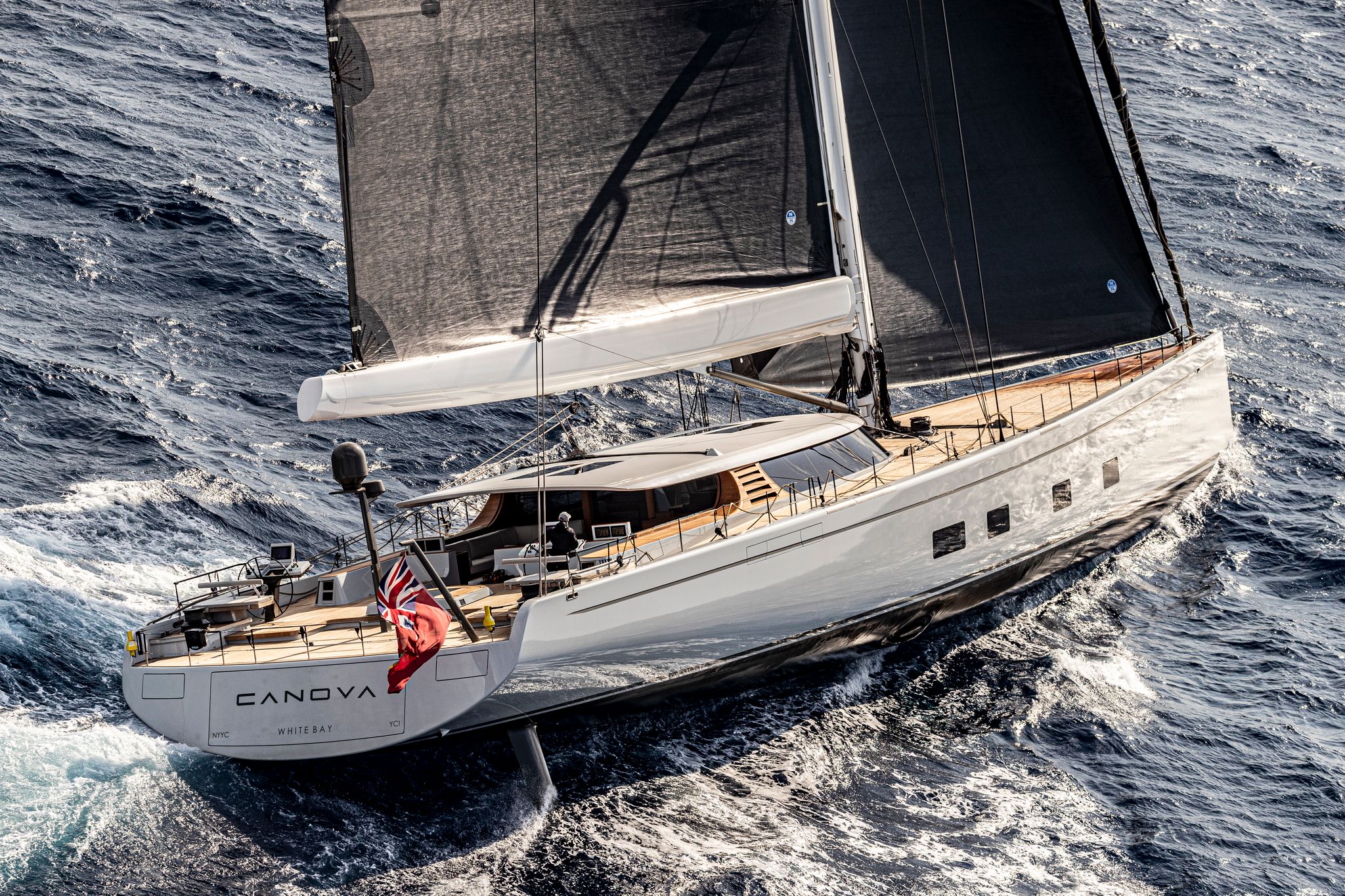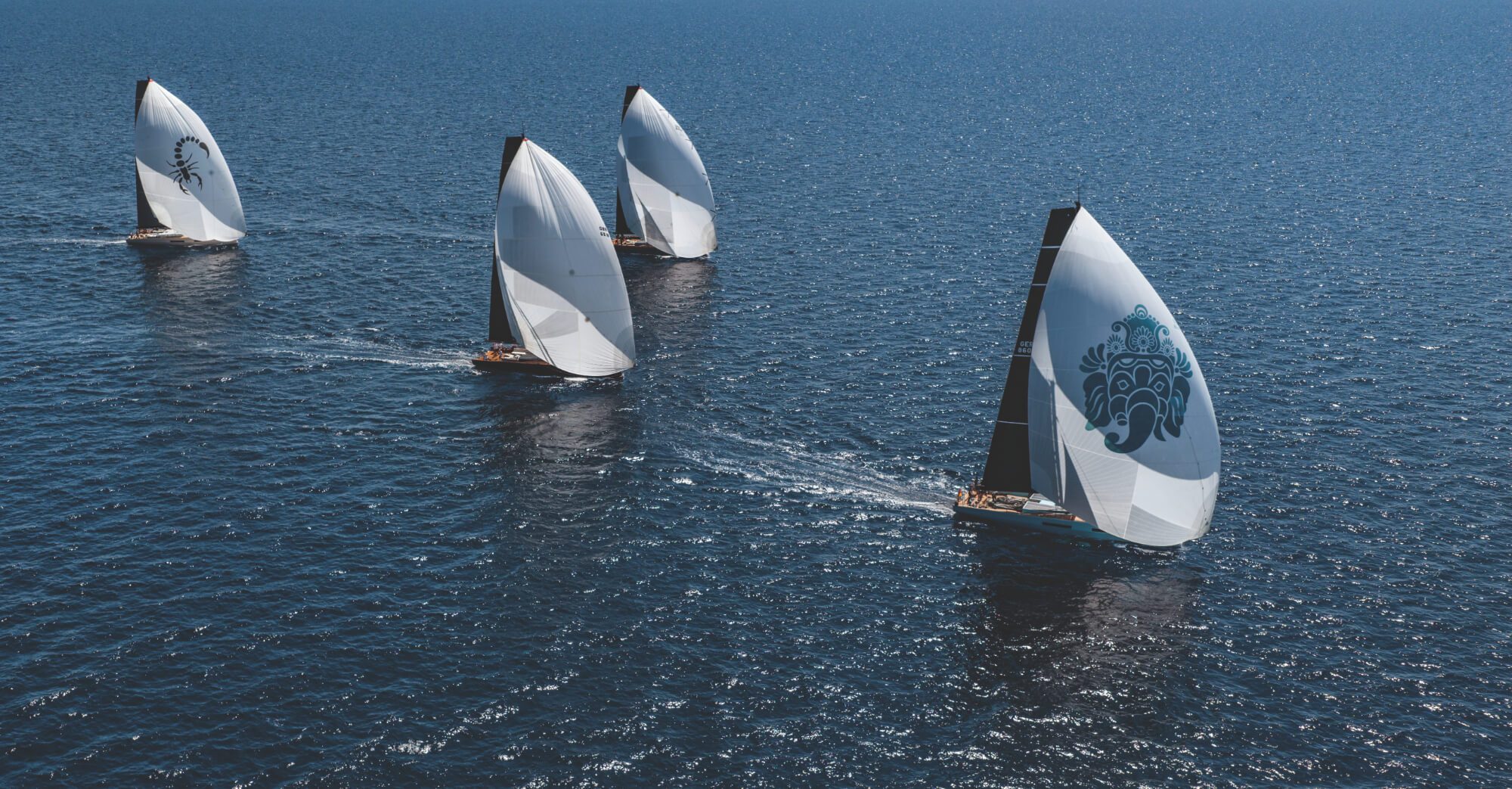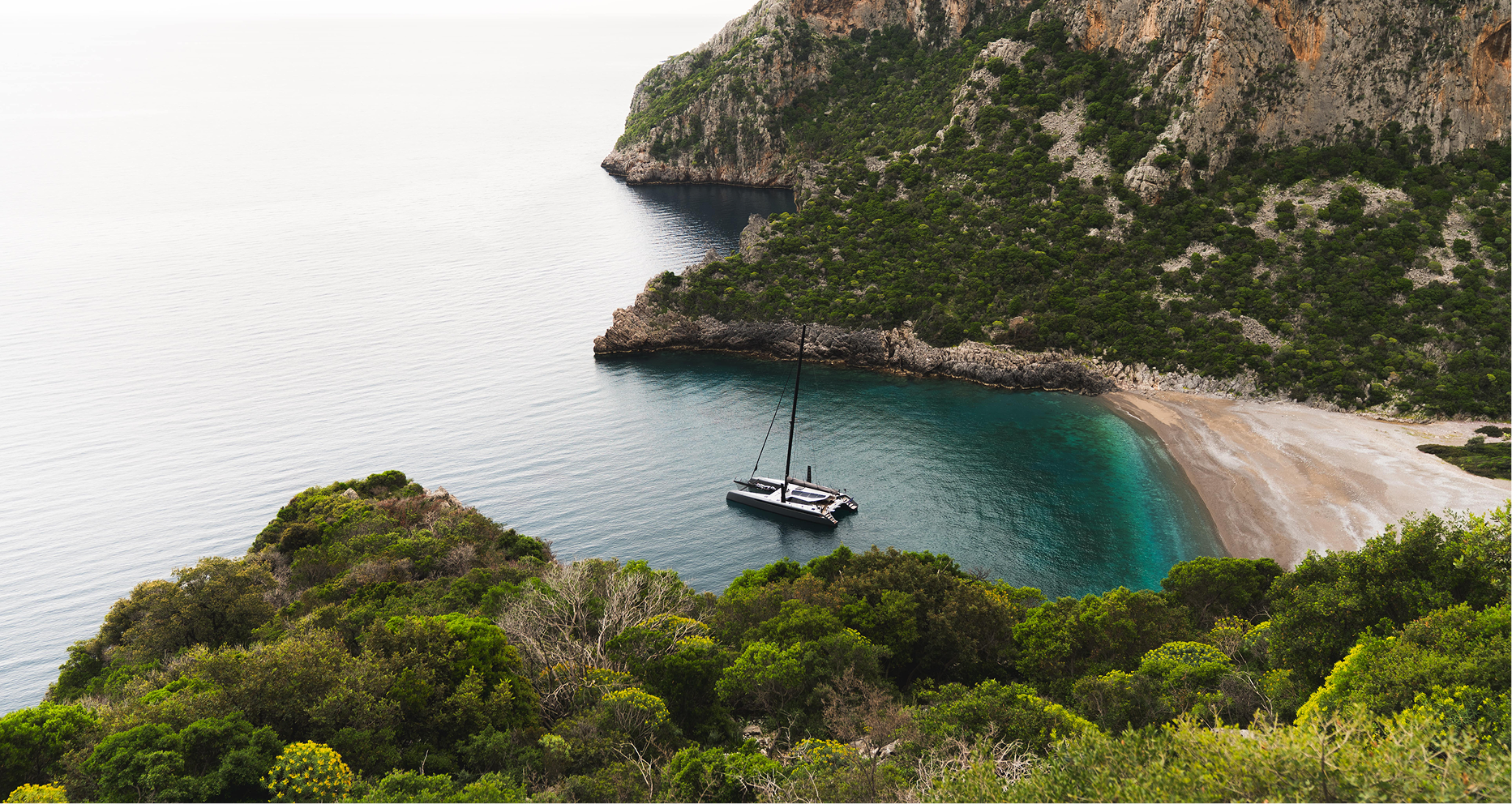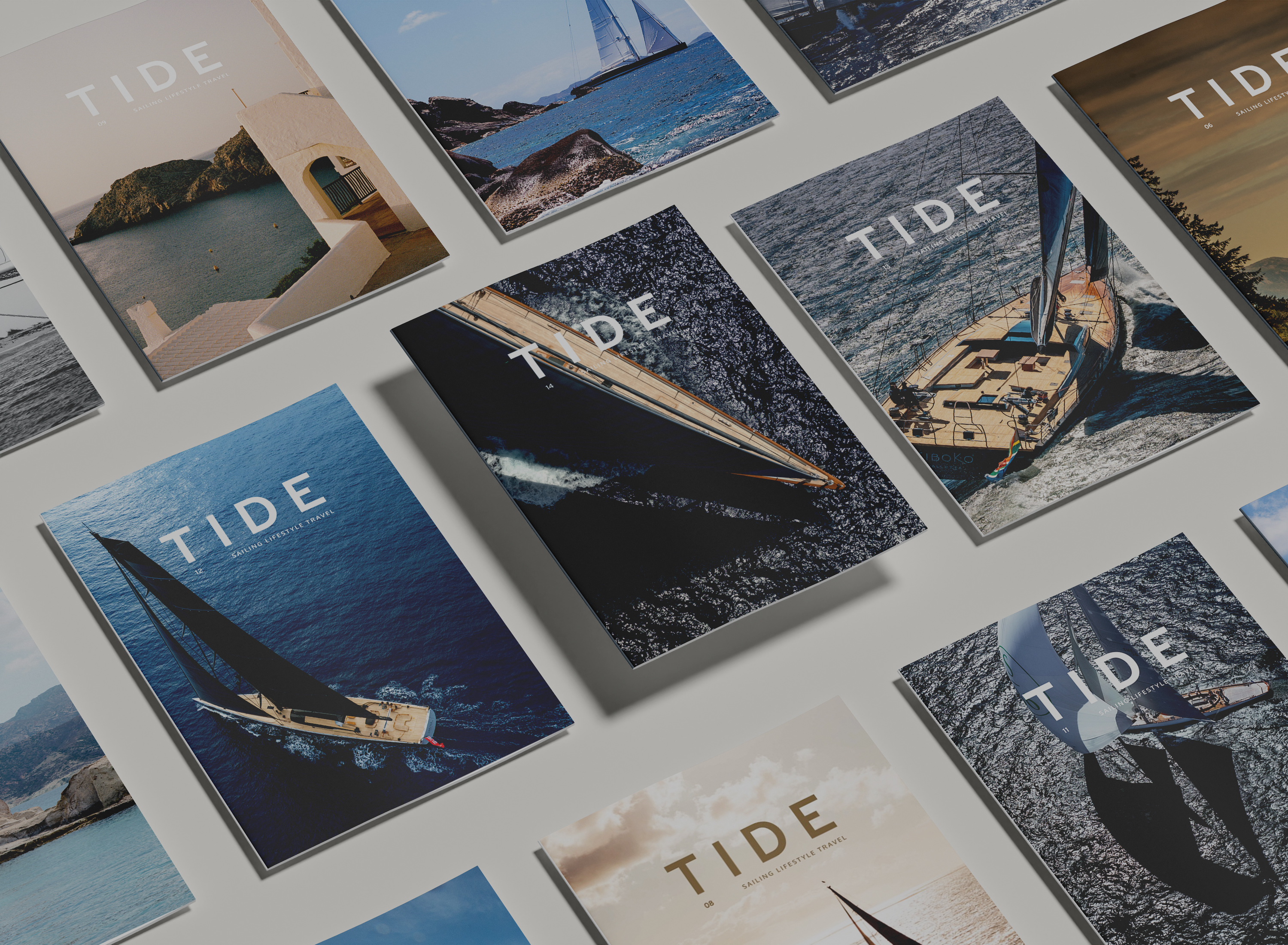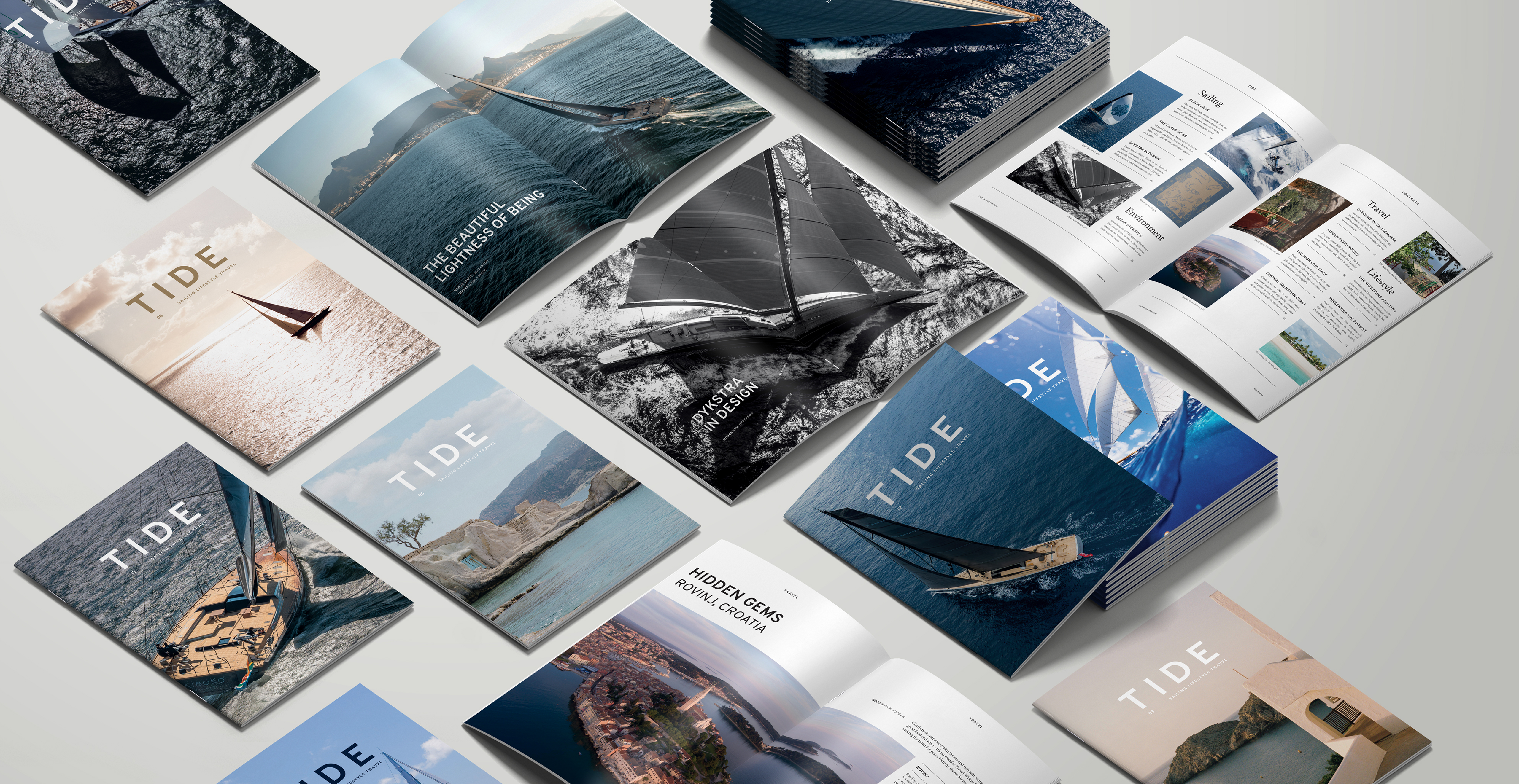At the dawn of the early Twenties, we find ourselves on the threshold of a new era in sailing; the America’s Cup enacted at speeds in excess of 40 knots and the drive towards environmental responsibility set against a backdrop of ever larger motor yacht builds. So, what does the future hold for the humble sailing yacht?
In pursuit of an answer, where better to start than with Henry Hawkins, Executive Vice President at Baltic Yachts. The Finnish shipyard’s appetite for innovation and high-quality craftsmanship has benchmarked the yard as the go-to builder for highly engineered, performance-driven custom yachts. Lauded as a doyen for advanced composite builds, they too are experiencing the post-COVID surge of activity that is spreading around the industry. As would-be owners are taken with the urge to seize the day, Hawkins has seen the demographic shift roughly 10 years younger than what had been considered ‘the norm’. Baltic is enjoying a full order book, but do these yachts have what it takes to embody the future of sailing?
For the purist, sailing represents an oxymoron. The allure lies in the tranquil experience, coupled with the forceful exhilaration of being transported across water by wind. As trite as those words sound it is undeniable that the simple joys of skipping across the bay in a dinghy translate into the graceful power of a large sailing yacht surging through the ocean. But this is not the familiar experience of all who take to the sea by boat. Motor yachts offer an altogether different reality to life afloat. And yet, in each of these disparate camps there lies an ever-widening middle ground. Could our growing environmental awareness and appreciation of slow travel (or any travel in 2021) be tipping the balance back in favour of sail?
The Baltic 146 Path is the latest all carbon fibre launch from Baltic Yachts and, true to form, exhibits the latest thinking in large yacht design and build processes. The Judel/Vrolijk & Co design is notable for her high interior volume design which was driven from the outset to provide spacious “multi-generational living” for the owner, and is, nonetheless, equipped to perform. Sporting twin rudders, a lifting keel and a quiver of rigged furling headsails she makes for a highly versatile yacht. An adaptable sail plan and draft range from 5.9m to 3.4m enables the crew to make the most of the conditions to get to a larger range of destinations quickly and with limited engine use.
Canova, the innovative Baltic 142 delivered in October 2019 remains one of the yachts to watch in the coming years. Measuring 43m and subtly eye catching in design, she is perhaps most notable for what can’t be seen from the outside: The core elements of electric propulsion and the first transverse Dynamic Stability System (DSS) foil. Add to that a generating system that recovers energy from the sheet winches as well as motion through the water, and it’s clear that Canova has delivered with serious ambition.
Every creative project begins with an idea or vision to achieve something. Whether innovative, beautiful or both, Baltic has realised the individual dreams and ideas of many clients throughout its history. Clients at all levels of experience and ambition select Baltic for their past creations and reputation for excellence. It also helps that Hawkins, a professional yacht captain who was first introduced to the firm by sailing on a Baltic 97 as a young man, steers the company with both sailor’s insight and commercial nous. He explains that clients have often engaged an architect before they approach the yard with a project and that one of Baltic’s strengths is their ability to collaborate freely with designers, engineers and suppliers from across the industry.
“Bringing everyone together in-house, right at the outset of a project, is when the creativity really starts to flow,” explains Hawkins, “More often than not, it’s the guys on the shop floor that really bring forward the game changing ideas”.
And so it was for Path where new levels of build efficiency were reached, achieved in no small part by working horizontally rather than vertically; thanks to the moulding process of the vessel, the ‘waterline split’ method allowed the systems, large hardware and much of the interior outfit to be fully progressed before the sides of the yacht were brought in to assembly.
In the case of Canova, when an experienced yachtsman arrived with the support of world renowned naval architects Farr Yacht Design, the focus was immediately placed on performance. Many of Baltic’s previous builds, such as Hetairos (Dykstra) and My Song (Reichel/Pugh) stand the yard in good stead in this respect. However, far from being out and out racers, these yachts have achieved admirable reputations as effective performance cruisers; an often used but all too frequently under fulfilled title. And it’s these ‘multi-role’ vessels that Baltic has become known for. After all, truly efficient design should lead to notable performance.
Of course, the client is king. But while it’s an owner’s dream that drives such special projects, individual motivations also inform the creativity of each designer and craftsperson. For Baltic, their freedom to work with whoever a client or project may bring to the table is one of their strengths. Versatility and an open mind are key to innovation. But so is Baltic’s attention to detail and craftsmanship, and whilst in great demand in any yacht build, these two traits are arguably more noticeable in the sailing yacht experience than aboard a motor yacht.
The superyacht industry’s arduous requirements bring out the best in craftsmen, Hawkins explains. Costly noise penalties promote the correct fitment of all assemblies and isolation of components. Air-conditioning requires the specifying of insulation and efficient materials. Not hitting these targets can be time consuming and expensive; those in the know are motivated to get it right first time, resulting in barely a squeak or a rattle when the vessel is heeled over and underway.
Propulsion and battery technology, led in part by the automotive and aviation industries, has filtered into the maritime world affording possibilities that formerly seemed unachievable.unachievable. Emission-free propulsion, sustainable timbers and the use of recycled materials are all mainstream, if under-used, alternatives. In a world where such choices are more a la carte than off piste, can the modern yachtie really have their cake and eat it?
Green credentials are increasingly coming to the fore. Those who choose to go afloat are perhaps more aware as to how our movements impact on our surroundings. They see first- hand the state of our planet. But far from impinging on the speed, range or comfort of a yacht, these sustainable design features often augment the sailing experience.
Perhaps Canova’s most recognisable feature is her horizontal DSS foil. Though initially introduced as a performance device, the owners’ intended use of Canova meant the foil was better suited for comfort than speed. The lift from the foil reduces the angle of heel and dampens the motion in a seaway. For those concerned about the transition from motor to sail, this simple yet highly effective application of hydrofoils is transformative to the sailing experience. Add this smooth motion to the lack of diesel fumes or the vibrations of a heavy engine and you get a serene and unadulterated sense of true yachting.
Though sailing yachts offer an abundance of space on deck and in sails aloft, interior volume is a point of education for those crossing from motor to sail but one aspect where Baltic are doing what they can to fulfil the highest expectations. The acres of deck space aboard Canova are a major plus point, too. Akin to a private island, the expanse of outdoor living is a dream. But as Hawkins points out, square meterage is just as much the language of motor yachts as it is for property. Particular attention was given during the hull design of Path to maximise internal volume, both in the hull shape and the placement of interior spaces, structure and sole levels to absolutely maximise the sailing yacht envelope.
A successful feature of both the Baltic 142 and 146 are the enclosed cockpits and spacious deckhouses. Combined with sizeable hard top biminis, be sure to watch out for these features to become more commonplace in years to come. It’s a tip of the hat towards motor yacht comfort, or better still, larger sailing vessels of old and, as Hawkins relays, the space and panoramic views afforded, and the ability to raise and lower glass wind shades on each side of the cockpit has been hugely popular. It offers unrivalled protection from, yet interaction with, the elements whilst providing a vast and discrete area for mounting solar panels.
The magnificent full-beam master suite of Canova, penned by Milanese design studio Micheletti + Partners, is afforded entirely by the versatile position of the electric propulsion system. It is a prime example of how incorporating sustainability can bring unexpected benefits. In a world where we are being incentivised to go ecological in our approach, a yacht sporting DSS, electric propulsion and regenerative technology would certainly seem to be a noble trailblazer. Those which follow in her wake may not sport such a full gambit of technical advances but in proving their worth Canova will reassure prospective yacht builders as the likes of Hetairos and Pink Gin did before her.
Hawkins believes that further enticements to switch from motor to sail are inherent to multi- hulls rather than conventional monohulls, and who could argue? Multihulls offer vast deck spaces and options for cabins while their natural traits at sea are fast and stable. Baltic is certainly up for the challenge and relishes the opportunity to build a multihull of the future; it’s currently finishing up a custom Baltic 117 that will sport a hybrid-electric drive system.
By all accounts we are not looking at a new dawn for the motor-sailor and this is not a frenzy of token green-washing either. Modern sailing yachts, such as Canova and Path are reaching a different audience with shifting priorities. Offering comparable transit speeds and motor- yacht sized suites, the sustainable revolution could be a new dawn for sailing.
The owners, crews and build team are still getting to grips with the full potential of these pioneering yachts. Following her Genoese maiden voyage the crew of Canova are looking towards their goal of a carbon-free transatlantic crossing which is within reach, potentially en route to the choppy waters of the Caribbean. As for Path, she is already in the Med and we can expect to see this striking yacht doing the rounds and making waves as her contribution to the new normal on the racing circuit and in cruising grounds alike.
The past year has more than inspired us to make our experiences count. So, if you’re going to travel, do it in style and enjoy the journey whilst respecting the environment. In other words, sail.


